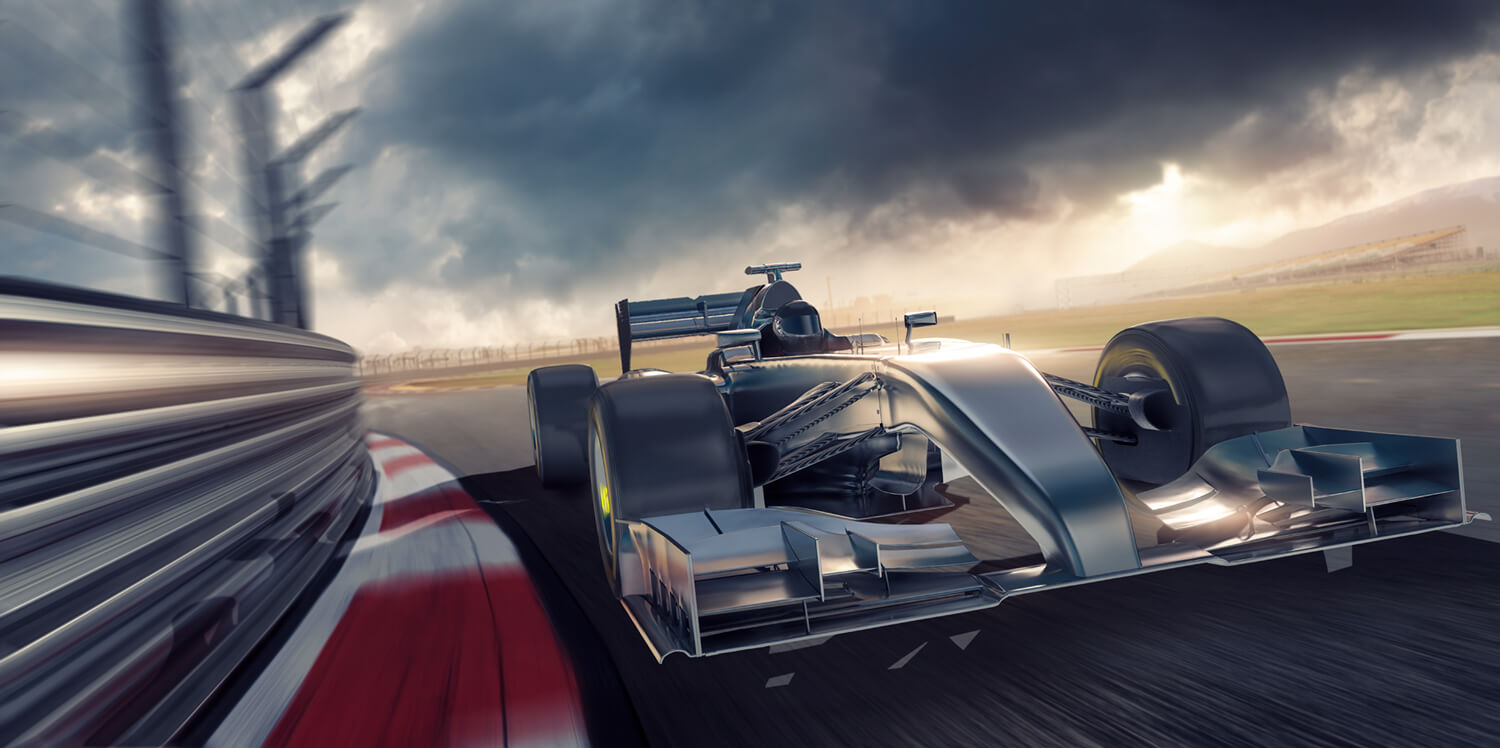
Carbon Fibers in the Automotive Industry: Torayca® Solutions
Toray Carbon Fibers Europe has been present for over 30 years in the field of motorsportand high-performance vehicles. Building on this heritage, our technological expertise enables car manufacturers to design safer, greener and more efficient vehicles.

High-Performance Automotive Technology: Leading the Route to Innovation
Compared to traditional materials, carbon composite materials can significantly reduce the weight of vehicles’ structure: saving 30% compared to aluminium and 70% compared to steel. In addition, our Torayca® Carbon Fibers offer superior mechanical performance. Toray’s renowned knowledge and experience of Formula 1 and other motorsports helps car manufacturers push technological boundaries and improve safety.
Our Torayca® Carbon Fibers are ideally suited for the serial production of structural and interior parts such as:
- Chassis;
- Driveshafts;
- Bodywork;
- Bumpers;
- Rear wings, diffusers, etc.
- Wheels;
- Seats (seatbacks, integrated heating systems); and
- Roof and door trims, sills, etc.
The Benefits of Torayca® Carbon Fibers in the Automotive Sector
Torayca® Carbon Fibers provide many advantages to the automotive industry:
- Lightweight: Weight savings and energy efficiency;
- Very high stiffness;
- Excellent tensile and flexural performances;
- High-impact resistance;
- Thermal resistance;
- Good impact absorption;
- Electrical conductivity; and
- Top-of-the-line finish.
Torayca® Carbon Fibers are also renowned for the premium feel they bring to the design of your vehicles. The textile quality of Torayca®’s T300 fiber is still unmatched in the market. The fiber alignment, the consistency of the tow width and the sizing agent ratio of the T300 create a homogeneous finish to carbon laminates. These tows are available in 1K, 3K and 6K (Kilo per thousands of filaments) and are ideal for interior applications.

Greener Transport: The Hydrogen Fuel Cell Revolution
To reduce CO2 emissions, Europe has tightened its regulations to encourage innovative solutions for new, greener and more efficient vehicles. Car manufacturers are now involved in the design of innovative engines, including hydrogen-powered vehicles.
For almost 20 years, Toray, in partnership with the Japanese manufacturers Toyota and Honda, has been involved in this technological revolution. Torayca® Carbon Fibers are used in the hydrogen tanks of the Toyota Mirai and the Honda Clarity Fuel Cell.
Torayca® Carbon Paper, a non-woven carbon fiber composite materialfelt, is ideal forto use as fuel cell electrodes.
Motorsports and Formula 1: On Pole Position with Torayca® Carbon Fibers
Formula 1 and other forms of motorsports pioneered the use of Torayca® Carbon Fibers in the early 80s. Today, about 70% of a Formula 1 car’s structure is made of carbon fiber. In addition to weight savings, increased rigidity and high-thermal resistance, the use of carbon fiber composite materials has contributed to significant improvements in driver safety. Many studies show the material’s effectiveness in resisting impacts and in absorbing the energy generated in a collision. Organisations such as the FIA (internationale de l’automobile) also acknowledge these facts.
Toray Carbon Fibers Europe offers many carbon fibers used in motor racing:
T800H, T1100GC
Intermediate module carbon fiber, from Space applications to Formula 1;
M40J, M46J & M55J
These carbon fibers are designed for applications requiring both high tensile strength and modulus.
Together with its sister companies in Europe, Toray Carbon Fibers Europe offers complete solutions for motorsports and high-performance cars:

